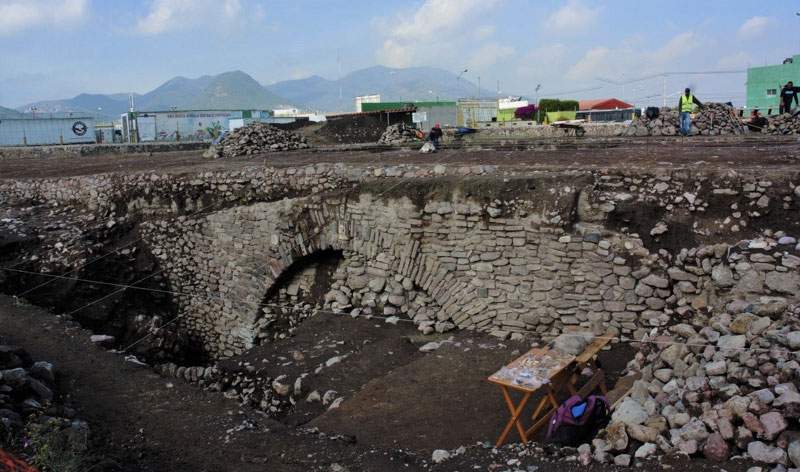A gallery with petroglyphs from the pre-Hispanic era, discovered in 2019 in Mexico on the outskirts of the capital, Mexico City, at Albarradón de Ecatepec, will be buried again because it lacks the resources to turn it into an archaeological site open to the public. This was announced in a note by the Instituto Nacional de Antropología e Historia (INAH), which finds itself unable to make the site an attraction for tourists and therefore has decided to cover it up to protect the structure.
“The Ministry of Culture and the INAH, through the Centro INAH Estado de México,” the note reads, “report on the determination to protect and cover the pre-Hispanic and viceregal remains found in the historic monuments area, Calzada Albarradón de San Cristóbal, in Ecatepec, once the archaeological recovery project that accompanied the construction of the Mexibús Line 4, funded by the State of Mexico Road Administration, is completed.” The 8.40-meter-long tunnel was discovered in October 2019: inside are 11 images including petroglyphs and stucco reliefs. To make it accessible to the public, at the time it was planned to create a windowed corridor that would allow visitors to admire the remains as they passed through the site. However, INAH explains, “this project would entail a considerable investment of resources in addition to those originally budgeted for road works, due to the need to carry out specialized studies and engineering works.”
Therefore, and “considering that the global health emergency caused by COVID-19 has forced institutions at different levels of government to prioritize resource allocation for population health care,” INAH explains, the archaeological project will be postponed. The INAH also points out that the artifacts are located in an area at high risk of vandalism or looting, so according to the guidelines set by the INAH Archaeology Council, the protection of archaeology has become essential and a priority. INAH technicians, therefore, after a detailed recording of the items found, decided to cover them according to the conservation and protection measures established by the Institute’s archaeological regulations.
“The Ministry of Culture and INAH,” the note concludes, “believe that these protective measures were the best decision for the preservation of the remains, and reiterate their readiness to cooperate with local and state authorities so that, as soon as the conditions are right, the exhibition project of this site can be resumed under the conditions necessary for its protection, preservation and safety.”
 |
| Lack of money to open it, and Mexico covers a pre-Hispanic site discovered in 2019 |
Warning: the translation into English of the original Italian article was created using automatic tools. We undertake to review all articles, but we do not guarantee the total absence of inaccuracies in the translation due to the program. You can find the original by clicking on the ITA button. If you find any mistake,please contact us.